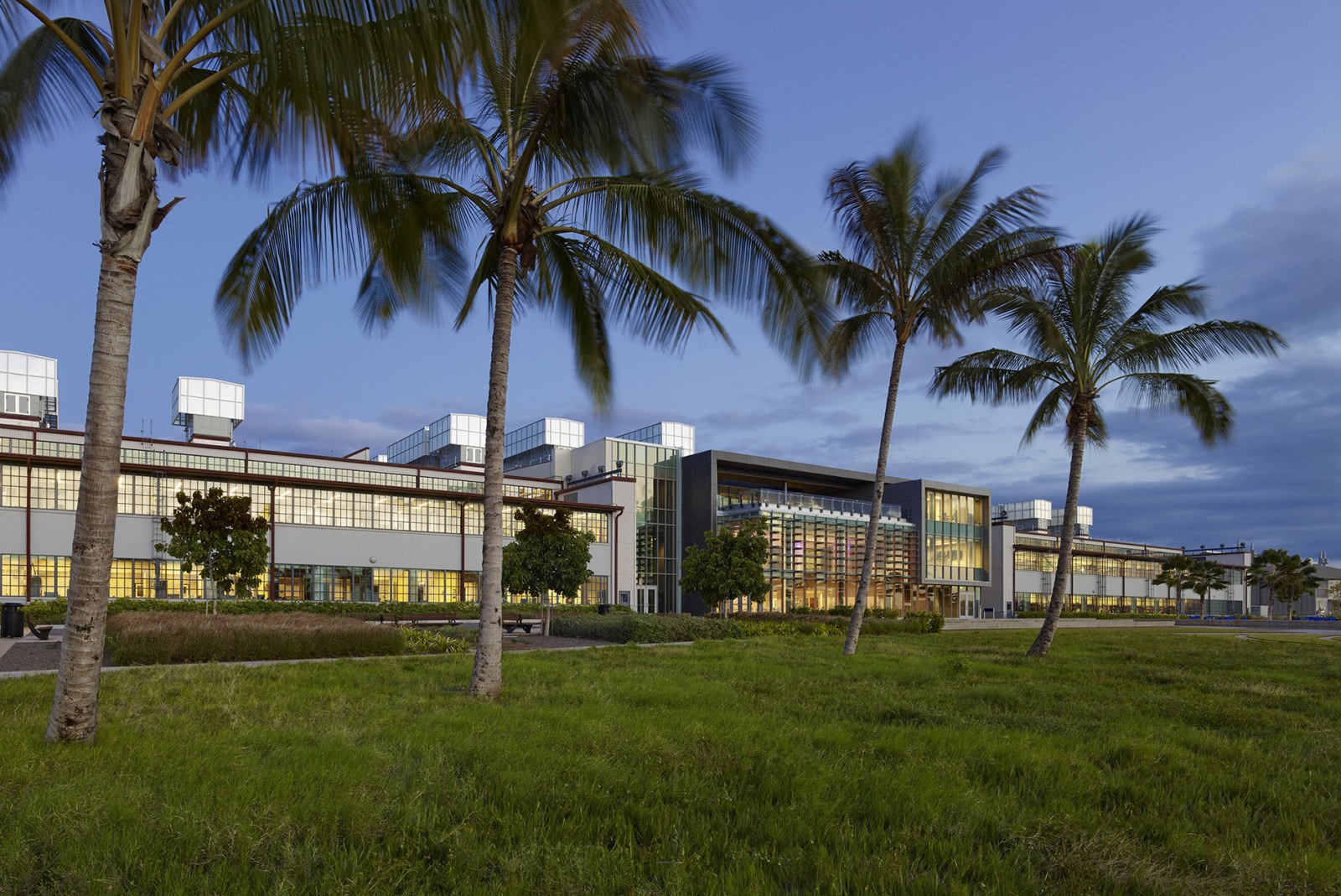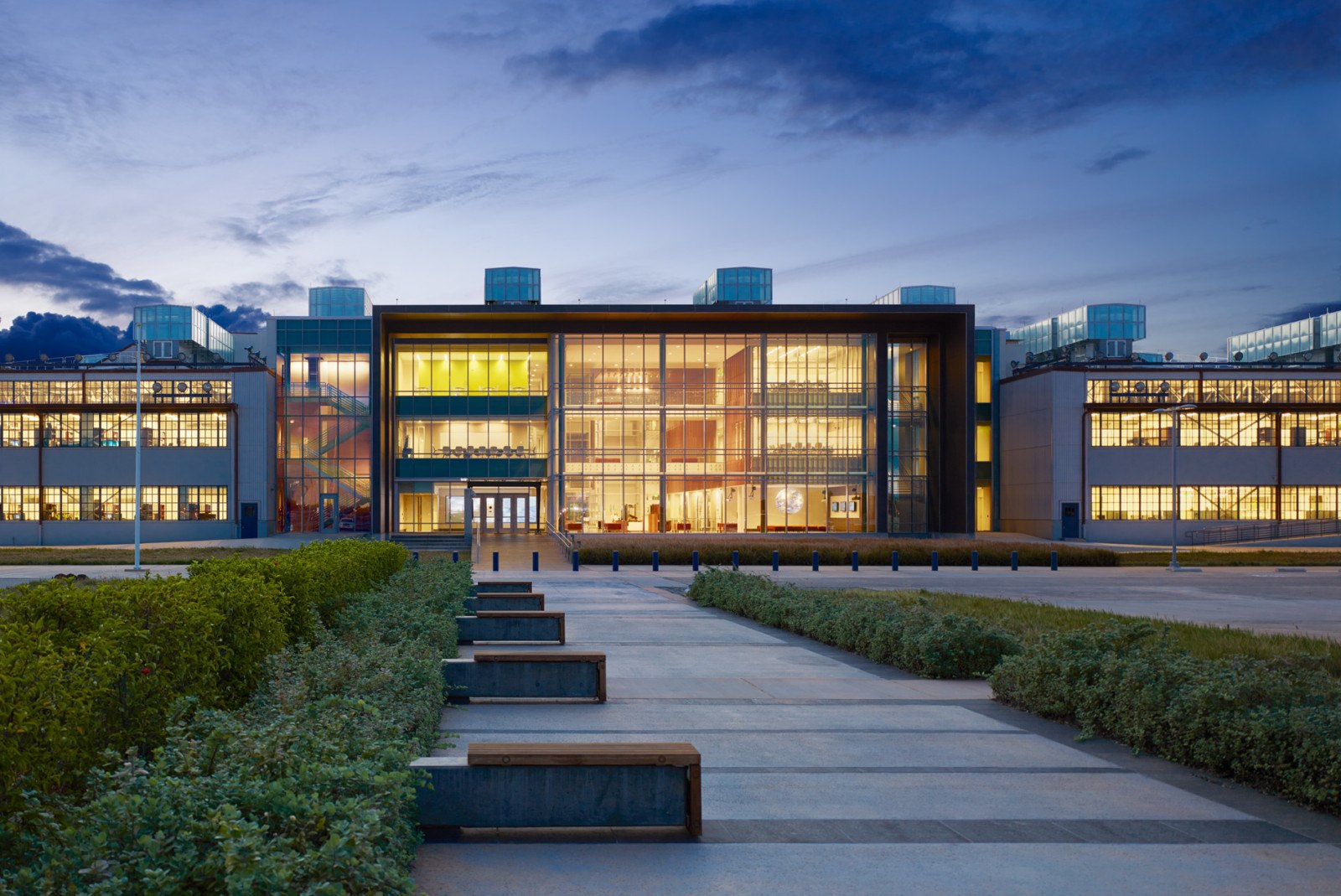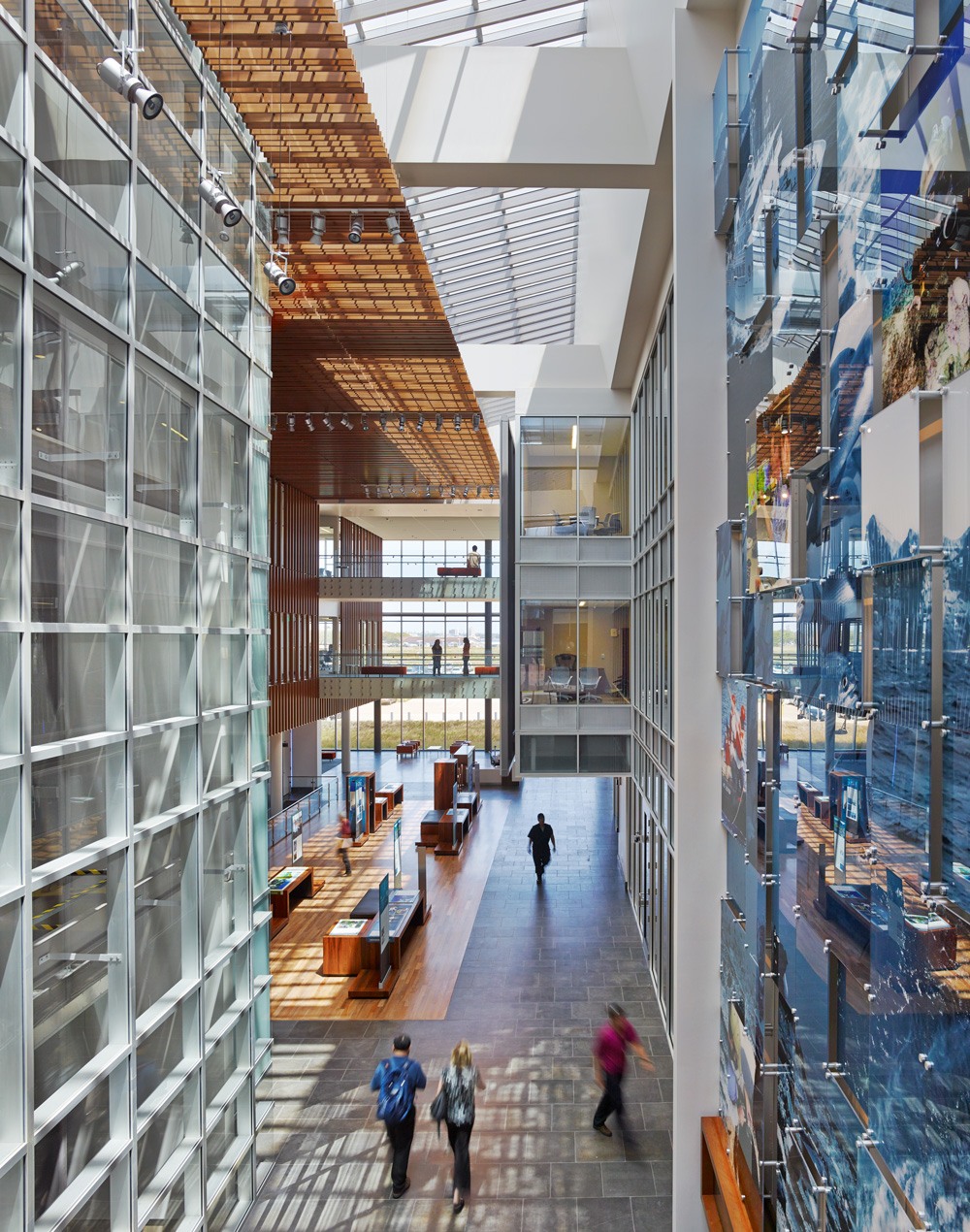Metropolis magazine interviewed project team members about how nature inspired the human-centric design of NOAA’s Daniel K. Inouye Regional Center in Hawaii.
Susan S. Szenasy, publisher and editor-in-chief of Metropolis, spoke to team members including Kyle Prenzlow, senior project architect, and Zorana Bosnic, sustainable design leader, both based in HOK’s San Francisco office, about renovating and expanded historic airplane hangars for the National Oceanic and Atmospheric Administration (NOAA) in Pearl Harbor, Hawaii.
Excerpted from Metropolis:
Susan S. Szenasy: It seems that we’re all trying to understand what it means to build in the 21st century, to build within the environment and with humanity at the center of it. This project by HOK personifies the new thinking.
Kyle Prenzlow: The site of the National Oceanic and Atmospheric Administration (NOAA) is about 35 acres, composed of six buildings. The main building houses about 800 staff, and supports all of NOAA’s operations throughout the Pacific region. It was the vision of NOAA to bring all of their groups together in one facility so that they could collaborate and, most of all, be efficient, share research, and also save operations costs.
We treated the design of the project like it was a university campus with quads. The footprint of the building is three-and-a-half acres, so we really needed to look for strategies to make neighborhoods and break up such a large space, while making autonomous groups feel part of a whole. The monkey pod tree was an inspiration for some of the daylighting strategies and the natural ventilation. It’s a native Hawaiian species and it influenced the design of some of the daylight requirements.
SSS: HOK has been exploring biomimicry and biophilia for some 15 years. Your practice is looking at ways a building can learn from its natural environment and the interaction between the two. Let’s talk about what you found in the Kahn building that was really interesting to you and how he related that building to that environment that it was built in.
Zorana Bosnic: There was an opportunity to bring the breeze as well as light into the hangars. There was also the ability merge indoor and outdoor spaces. It was very transparent and very accessible. Early on, we looked at historic and natural contexts of the island and the monkey pod tree was one of the inspirations. It’s a single trunk tree that has a very dense top layer canopy and provides really good shade and thermal comfort during the hot humid days. Then when it’s overcast and raining, the leaves curl up into a narrow, conic shape and allow the breezes and rain to reach the ground. The grass is literally greener under the monkey pod tree because it allows the rain to reach the soil.
In 2000, the conversation about the interaction between design and the natural world asked, “How can innovation in the built environment be inspired by nature?” One interesting aspect to the biomimetic approach was the focus on performance. There is 3.8 billion years of natural world around us. What can we learn about these processes and how can we translate that into our buildings and make them better performing? That evolved slowly into human-centric design. What does it mean to the people occupying the building?


